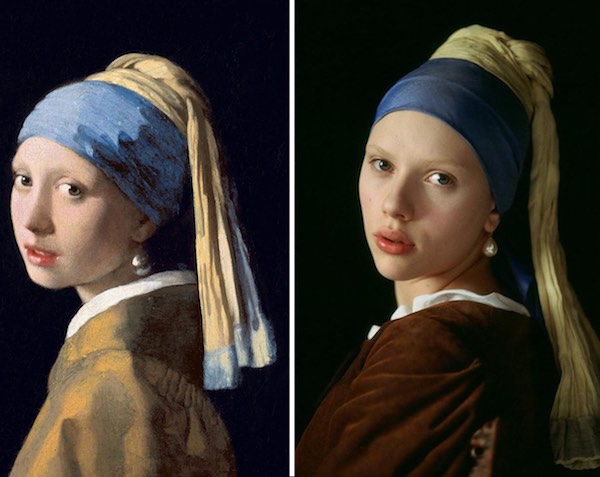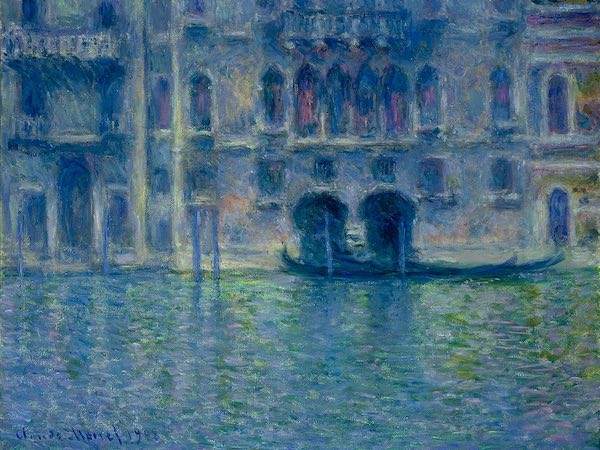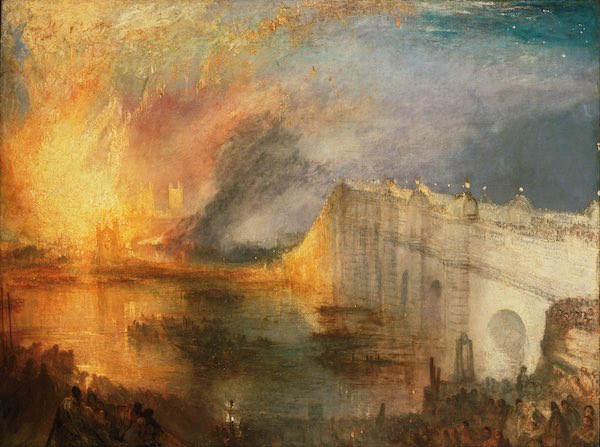How do you make your brand look more expensive, high-end, and luxurious?
This new research reveals a surprisingly simple way to build and market a luxury brand.
I’ll explain…
But first:
You know how I feel about branding, right?
9 times out of 10, I think it’s a big waste of time.
But this research still caught my attention. And, it’s such an easy tweak, that I wanted to share it.
It also debunks the “content is king” myth – again.
This science-backed marketing trick is for you if you’re selling (or want to sell) any kind of luxury product.
You can use it to instantly make your brand feel more high-end and expensive.
Here’s how.
Can Luxury “Spill Over”?
So, let’s say you…
- Sell high-end fashion.
- Resell vintage designer clothes.
- Make expensive jewelry.
- Run a high-end barber shop or salon.
- Sell high-end interior-design services.
Whatever the case may be.
You want your business to give off an air of luxury, prestige, and sophistication.
As it turns out, there’s a simple way to do it.
First, some context:
Studies show that properties of one thing rub off onto other things. For example…
If you put your picture next to the picture of a famous person, people will think you’re famous, too.
Weird but true.
I explain how it works in my video on how to become famous.
Another example:
A 2006 study found that people don’t like to buy products if other people touch them first. The products are somehow “contaminated.” LOL. Anyway…
This got two researchers from the University of Georgia thinking.
Is there a positive way to take advantage of this spillover effect if you sell a luxury product?
So, they ran some experiments and published the results in the Journal of Marketing Research in 2008:
The theory was that “high-art” would make people perceive products as more favorable and more luxurious.
Why? Because “art” is generally viewed as expensive, exclusive, and sophisticated. So does that sense of sophistication and exclusivity spillover from the artwork to the product?
Here’s what the science says.
The Art Infusion Effect
To test their theory, they ran 3 experiments.
The first experiment tested the effect with a set of silverware.
People were presented with a box of silverware – in a nice, black velvet box, lined with white satin.
Now, the box had one of two images on top:
Either a generic photo of a cafe. Or this…

“Café Terrace at Night.”
…print of Van Gogh’s “Café Terrace at Night.”
(The study did a pretest to make sure people viewed the painting as more artful than the photo. And they also made sure the results were independent of whether people knew the painting or how familiar with art they were in general.)
Then, people were asked to provide feedback on the silverware.
People rated the product on different scales to indicate how luxurious, prestigious, and high class they perceived it.
The result?
When people saw the art image, they perceived the silverware as significantly more luxurious.
So, it seems the perceived luxury of the artwork spilled over. But was it really the art?
Maybe the content of the images was too different.
And maybe this perceived luxury could be achieved in another way. For example, what if there was a picture of a celebrity on the box?
Kind of like Lincoln used Mad Men’s John Slattery in this ad:
So the study ran another experiment.
They wanted to make sure the artistic nature of the painting was responsible for the effect.
This time they used the following two images:

High art vs. photo
On the left is Johannes Vermeer’s painting “Girl with a Pearl Earring.”
On the right is a photo from a movie poster: a photo Scarlett Johansson, posing as the “Girl with a Pearl Earring.”
So, clearly, the content of the image is identical. The only difference is that the painting is more artistic.
The experiment used both images in an ad for bathroom fittings.
Here’s what they found:
Again, the product was perceived as more favorable overall and more luxurious in particular, when people saw the art-infused ad.
(The ad WITH art was also better than an ad with no image at all.)
So… even more support for the art infusion effect. And clearly, it wasn’t based on the content of the images. I mean, the subject was identical.
The perception of luxury seems to spill over from art to your product.
Now here’s what’s crazy:
This seems to hold true, even if the art has “negative” content.
Here’s what I mean…
In a final experiment, the following two works of art were printed right on the product (a soap dispenser):
Artwork 1…

Claude Monet’s painting Palazzo da Mula
…compared to artwork 2:

J.M.W. Turner’s painting The Burning of the House of Lords and Commons
Did it matter that one of the paintings literally shows a building burning down?!
The answer based on what we know so far would have to be…
No.
The Art Infusion Effect says the content doesn’t matter. As long as it’s artistic. And that’s exactly what the data said, too:
Both the Monet and the Turner resulted in equally favorable product evaluations.
Most importantly, both artworks made people rate the product as significantly more “luxurious.”
(Compared to both a photo of a canal in Venice and no image at all.)
Here’s what all of this means for you…
Art Makes Your Product and Brand More Luxurious
This is pretty cool if you’re selling a luxury product. You can simply use works of art to make your brand feel more high-end and exclusive.
For example, you could…
- Use art in your packaging
- Use art in your advertising
- Use art in the design of your product itself
Now here’s why I like this.
High-end branding can often be expensive. If you want to hire a celebrity endorser, you’ll need to spend some serious $$.
Of course, you could just put a picture of a fancy car or a ballin’ house on your website but…
…does that really fit your product? If you’re selling diamond watches, maybe. Otherwise, it’s not a good fit.
On the other hand…
Infusing your product with art is super EASY!
It’s simple and it’s cheap.
Many great works of art are in the public domain. You can download and use them for free. So, it’s a great resource to tap into.
Finally, if you want to take this to the next level:
Further research shows that there’s a way to make the effect even bigger…
…but you need to know your audience.
Does your audience has a high desire to signal their status? Then using highly-recognizable works by famous artists is the way to go.
If your audience doesn’t want to be seen as “fancy,” using artworks that are less recognizable is better.
Cool?
Cool.
Now go and infuse your business with some art… and make your products more luxurious!








Fascinating, that’s how I would define this article, because it has allowed me to understand so many things I can apply to my own stores, to increase their perception of value, and therefore, sell my products for a better price for me.
What do you think is the role of customer support here? I believe that if customers feel that the brand is connected with them, and even more engages directly with them, that will create a positive perception.
Thanks for sharing this beautiful post!
This is the most interesting article for this week, will definitely put it a try. 🙂
Thanks for sharing this beautiful post on infusing art with your brand building. I totally agree that if you have identified your target customers clearly and are using right colors and visuals in your brand building journey then you are sure to attract prospective customers for your business. Its not just because that you are spreading your message in visual forms but it due to the psychological effect on human mind. Yes, different colors have different psychological effects on human mind. So make sure to use the right color in your branding.
Very motivational. Thank you.
Wow.
Love the post, Derek. Nothing less than what I expect you would publish on this blog.
I will give this a try in one of my future projects.
Keep up the great work!
Thanks,
Mohit
Was intrigued by the pictures and the headline, only to find out my product is already perceived as utter luxury xD
I am an abstract artist (@juliabadow on Instagram). Although not necessarily what I’ve been looking for, this post helps me clarify to licensing companies why they should consider printing my art on their products.
Thanks for the arguments and studies!
Julia
You are really great at putting into words these things that we all know are true deep down.
In addition to art there are other items, and activities, too, that give the idea of being luxurious.
I am thinking about your $310 haircut. Like the gold comb, or the hair studio.
Probably also certain kinds of food, like caviar carries similar effect.
Loved this article. I’m always at a loss what images to use for my blog posts, and the tip about the NGA will really help. I wonder whether the works of art I choose as blog post images will make my content appear more valuable.
Hmmm . . . My product is art, and I’m wondering how to make that seem like more of a luxury. Art is the product. I can’t use other art to sell art! Is art automatically considered a luxury item?
I think this is my favorite blog post of yours so far, and that says a lot! Thank you for posting this! I’ve been thinking of how to attract celebrities into my business, and this adds one piece to the puzzle — famous mother/child paintings. Will definitely figure out how to apply this! 🙂
This is the most interesting thing in my inbox in weeks! I’ll definitely test this. Much appreciated.
Great post.
Would this work with music?
I tune pianos and I’m thinking of sponsoring an operatic concert.
I have a high-end Dating and Social Development brand and think of different ways I could implement art all the time. Mainly because I’m an artist. But I do this subconsciously.
Glad to now see that there’s merit in my artsy brain.
You might try the “Deep Art Effects” a mobile phone app that can take a picture and turn it into an artist rendering or conception, or fotosketcher that does the same thing. Then you can make whatever more artistic and see if there is a change of perception from your prospects. Nice post Derek, appreciate it.
This is a great article and links to free art- Thank you!
Fascinating, Derek. Thanks for writing this.
This is true art can be seen easily by a men’s naked eyes. Therefore the impression that the art emphasizes brings the client the 1st impression.